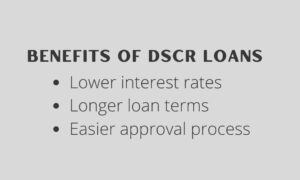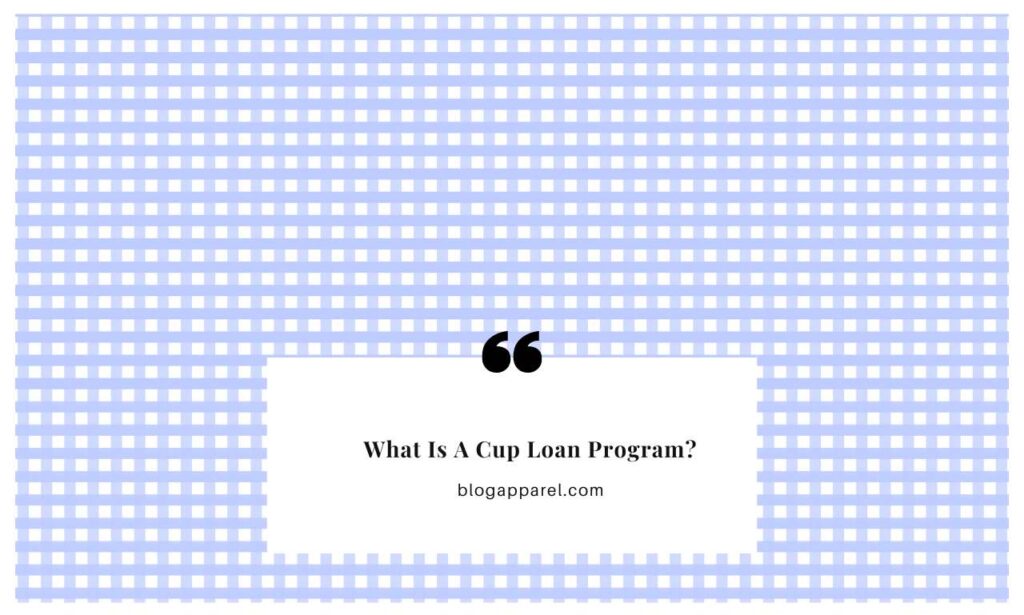A loan known as DSCR, an acronym for Debt Service Coverage Ratio loan, epitomizes a lending strategy where lenders gauge borrowers’ ability to pay back loans by examining their cash flow. This assessment entails directly comparing the generated income with the debt payment responsibilities.
Introduction
A Debt Service Coverage Ratio (DSCR) loan represents a nuanced approach to lending, focusing more on an entity’s cash flow and revenue-generating capability rather than traditional credit metrics. This type of financing evaluates the borrower’s ability to cover loan payments through their operational income, with the DSCR calculated by dividing the net operating income by the total debt service. Tailored for businesses and real estate investors, it offers a flexible alternative for those with fluctuating income streams.
What defines a DSCR loan?
A DSCR loan, short for Debt Service Coverage Ratio loan, is a financing option where lenders assess borrowers’ repayment capacity by looking at their cash flow. This approach focuses on the revenue produced by the borrower’s business activities instead of depending entirely on traditional credit criteria, comparing the borrower’s net operating income to their debt obligations. This method provides substantial financing possibilities for companies that have solid operational cash flows but might have non-traditional credit histories.
Explanation of Debt Service Coverage Ratio (DSCR)
The Debt Service Coverage Ratio (DSCR) emerges as a crucial financial measure, particularly significant in the scenario of a DSCR loan. It determines the capacity of borrowers to manage their debt repayments through the revenue they accrue, providing a detailed evaluation of their fiscal wellness beyond standard credit evaluations.
How DSCR is calculated
Calculating DSCR involves dividing the borrower’s net operating income (NOI) by their total debt service, including principal, interest, lease payments, and other debt obligations due within a year. This formula provides a ratio that measures the sufficiency of cash flow to cover debts, with a higher ratio indicating greater repayment capacity.
Why DSCR is essential for lenders
For lenders, the importance of DSCR cannot be overstated. It aids in assessing the risk associated with a DSCR loan by evaluating how comfortably a borrower can handle debt payments from their business income. A robust DSCR means reduced risk for the lender, as it suggests the borrower’s operations generate enough revenue to sustain debt obligations, making it a cornerstone in lending decisions.
Eligibility for DSCR loans
Eligibility for DSCR loans primarily hinges on the borrower’s Debt Service Coverage Ratio, a measure of cash flow relative to debt obligations. Lenders typically seek a minimum DSCR threshold, often more significant than 1.0, indicating that the borrower generates sufficient income to cover their debt payments and then some. This criterion places a premium on the borrower’s operational income, making these loans especially suitable for businesses with strong cash flows.
Factors considered by lenders
When evaluating eligibility for DSCR loans, lenders delve beyond basic financial metrics to assess a borrower’s overall economic stability. Key factors include the business’s net operating income, existing debt obligations, and cash flow consistency. Lenders also consider the potential for income fluctuations and the borrower’s industry, evaluating how these elements might affect the ability to sustain debt payments over time.
How to improve the DSCR ratio
Improving a DSCR ratio, thereby enhancing eligibility for DSCR loans, involves increasing net operating income or reducing total debt obligations. Strategies can include:
Optimizing operational efficiency to boost profits.
Refinancing existing debts to lower payments.
Delaying new debt acquisition until income stabilizes.
A higher DSCR reflects a stronger financial position, making businesses more attractive to lenders.
Benefits of DSCR loans
DSCR loans offer distinct advantages, particularly for businesses with strong cash flows. These loans prioritize operational income over traditional credit metrics, enabling entities with fluctuating revenues to secure financing. Lenders can offer more flexible terms by focusing on the Debt Service Coverage Ratio, often resulting in lower interest rates and extended repayment periods. This approach allows businesses to leverage their income-generation capabilities, facilitating growth and operational expansion without the constraints of conventional lending criteria.
Lower interest rates
One of the standout benefits of DSCR loans is the potential for lower interest rates. Businesses demonstrating strong and consistent income can negotiate more favourable terms because these loans assess a borrower’s capacity to be high based on cash flow rather than traditionafavourablescores. This aspect can significantly reduce the cost of borrowing, offering a substantial financial advantage.
Longer loan terms
DSCR loans often come with longer loan terms than standard financing options. This extended repayment period gives borrowers a more manageable debt service schedule, reducing the monthly financial burden and enhancing cash flow flexibility. It allows businesses to plan and invest in growth initiatives with a longer horizon, knowing their debt obligations are spread over time.
Easier approval process
The approval process for DSCR loans is more straightforward for businesses with solid income streams. Since the focus is on cash flow rather than credit history or scores, entities with less conventional financial profiles but substantial operational revenues may find it easier to gain approval. This inclusivity broadens access to financing, especially for newer businesses or those with variable income patterns, making DSCR loans a valuable resource for a wide range of borrowers.
Who Can Benefit from DSCR Loans?
DSCR loans benefit businesses and real estate investors with solid cash flows but less conventional credit profiles. Entities that generate stable and substantial operational income—such as rental properties, restaurants, and retail stores—can leverage these loans effectively. They’re also ideal for those experiencing rapid growth or fluctuating revenue, as the loan approval focuses on income generated from operations rather than traditional credit metrics, offering a flexible financing solution.
Real estate investors
Real estate investors stand to gain significantly from DSCR loans, as these financing options are ideally suited to properties generating rental income. By focusing on the income the investment produces rather than the investor’s credit score, DSCR loans offer a pathway to expand portfolios or refinance existing properties under more favourable terms, catering specifically to those looking to leverage cash flow for growth.
Small business owners
Owners of small businesses, especially those operating in industries characterized by robust cash inflows such as retail, hospitality, and services, can leverage DSCR loans to spur growth, regulate cash flow, or pursue new ventures. The opportunity to obtain financing grounded in the business’s ability to generate revenue, as opposed to the personal financial background of the owner, provides a pathway for enterprises looking to expand or achieve stability.
Individuals with fluctuating income
Individuals with fluctuating incomes, such as freelancers, consultants, and gig economy workers, often need help securing traditional financing. DSCR loans present a viable alternative, as they assess loan eligibility based on the cash flow generated by their professional activities. This focus allows those with non-traditional income patterns to access capital for investment or personal needs, offering a flexible solution to meet their financial goals.
How to Qualify for a DSCR Loan
To qualify for a DSCR loan, the key is to demonstrate sufficient cash flow to cover debt payments. Applicants must present a solid net operating income (NOI) that exceeds their current debt obligations, typically aiming for a DSCR ratio of 1.25 or higher. Lenders will also review the stability and predictability of this income. Preparing detailed financial statements and projections can help illustrate the business’s ability to maintain or improve its cash flow, enhancing eligibility.
Factors considered by lenders when evaluating DSCR
In determining qualification for a DSCR loan, lenders carefully examine various elements, focusing on the borrower’s net operating income (NOI) and debt repayment responsibilities. They evaluate the steadiness and dependability of revenue sources, the historical financial achievements of the business, and its prospects for generating income in the future. Additionally, the specific industry and prevailing market trends are considered since they can significantly affect the consistency of earnings.
Tips for improving the DSCR ratio
Improving your DSCR ratio, thereby strengthening your qualifications for a DSCR loan, involves increasing your operational income through revenue enhancement or cost reduction measures and managing or refinancing existing debts to lower monthly payments. Additionally, optimizing business operations for efficiency and scalability can lead to sustained improvements in cash flow, making your loan application more appealing to lenders.
Case study: How a DSCR loan helped a business succeed
A burgeoning restaurant facing seasonal fluctuations in revenue secured a DSCR loan to navigate through lean periods and invest in marketing. By focusing on the restaurant’s substantial summer income, the lender provided flexible financing, allowing the business to maintain operations year-round. This strategic infusion of funds enabled the restaurant to cover its off-season expenses and expand its seating capacity. The investment paid off, resulting in a significant increase in annual revenue and solidifying the restaurant’s position in a competitive market. The DSCR loan was pivotal in transforming the restaurant from a seasonal operation to a thriving, year-long enterprise.
Overview of business
We delve into a charming boutique hotel in a sought-after tourist hotspot renowned for its custom-tailored service and distinctive guest experiences. Leveraging its optimal location and outstanding service, this establishment has cultivated a devoted clientele and secured a consistent flow of revenue throughout the high travel seasons.
Challenges faced
Despite its success, the hotel faced significant challenges during the off-season months. The fluctuating revenue made it difficult to manage operational costs and invest in necessary renovations to stay competitive. Traditional financing options were not viable due to the seasonal nature of the business’s income.
How did the DSCR loan provide a solution?
A DSCR loan emerged as the ideal solution, offering the flexibility to navigate the hotel’s unique financial landscape. By evaluating the hotel’s strong performance during peak periods, the lender provided a loan tailored to the business’s cash flow rather than its credit score. This financial support enabled the hotel to cover its off-season expenses, undertake renovations, and implement marketing strategies to attract guests year-round, leading to increased occupancy rates and a firmer financial footing.
FAQs
Can I make additional payments towards my loan?
Paying additional amounts towards your loan can significantly reduce your total loan cost. It decreases the principal faster, reducing the amount of interest you pay over the life of the loan.
Does refinancing help in reducing loan costs?
Refinancing can reduce your total loan cost if you secure a lower interest rate or a shorter loan term. It’s essential to consider closing costs and fees to ensure refinancing provides net savings.
How does a shorter loan term affect loan costs?
Choosing a shorter loan term typically results in higher monthly payments. Still, it significantly reduces the amount of interest paid over the life of the loan, thus lowering the total cost of the loan.
Can negotiating the interest rate reduce loan costs?
Indeed, engaging in conversations with your lender to negotiate a lower interest rate before finalizing the loan can reduce the total cost associated with your borrowing. Even a tiny adjustment in the interest rate can amount to considerable financial savings over the life of the loan.
Does paying bi-weekly instead of monthly reduce loan costs?
Paying bi-weekly can reduce your total loan cost because it results in one extra full payment each year, reducing the loan balance faster and decreasing the interest accrued.
Can rounding up payments impact loan costs?
Rounding up your loan payments to the nearest $50 or $100 can subtly increase your principal repayments, reducing both the loan term and the total interest paid, thereby lowering the overall cost of your loan.
Conclusion
A DSCR loan emerges as a pivotal financing solution for businesses and real estate investors. Focusing on the Debt Service Coverage Ratio, this loan type transcends traditional lending criteria, prioritizing cash flow over credit scores. It offers a tailored approach, enabling borrowers with fluctuating or seasonal incomes to secure funding based on their operational income’s strength. For those looking to expand, refinance, or sustain operations through uncertain times, the DSCR loan is a testament to flexible, forward-thinking financial products designed to meet diverse needs.















